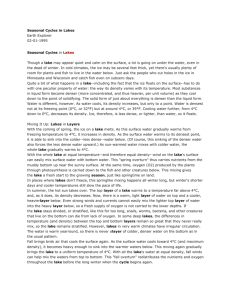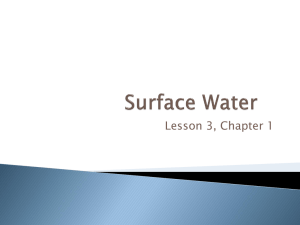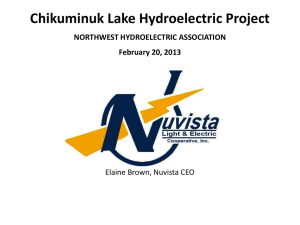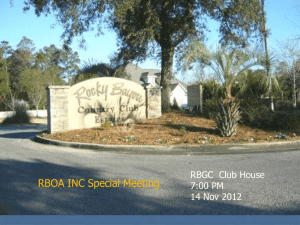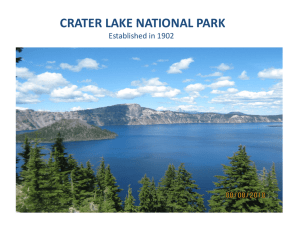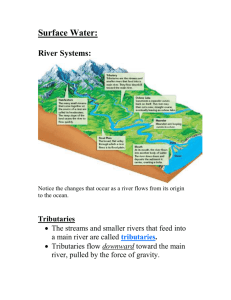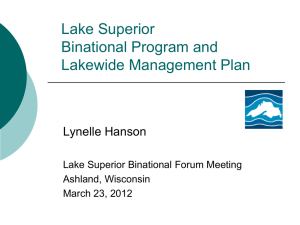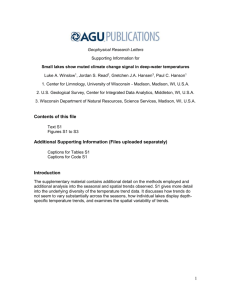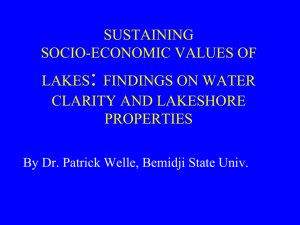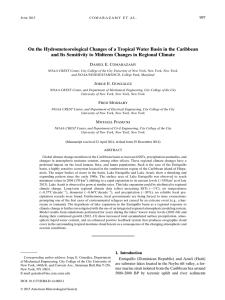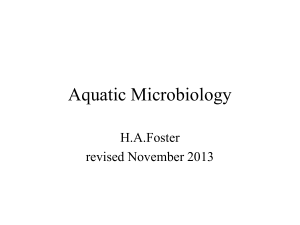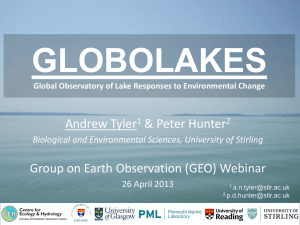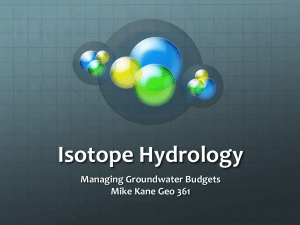Here - NOAA
advertisement
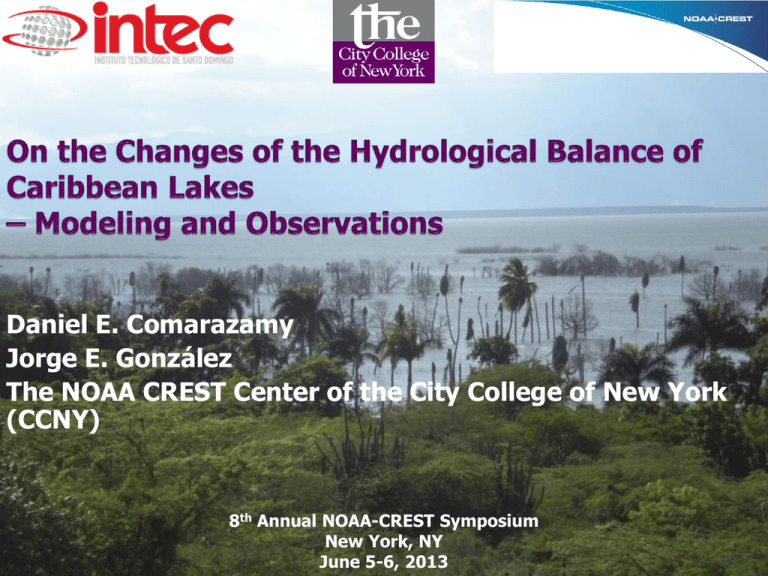
Daniel E. Comarazamy Jorge E. González The NOAA CREST Center of the City College of New York (CCNY) 8th Annual NOAA-CREST Symposium New York, NY June 5-6, 2013 1 Acknowledgements - Yolanda León, Cándido Quintana (INTEC) - Domingo Brito, Julio Román, Aury Nova (MINMARENA) - Fred Moshary, Michael Piasecki, Equisha Glenn, Adam Atia, Ksenia Shikhmacheva, Hagai Rifkind, Joseph Cleto (CCNY) This study is supported and monitored by NOAA under CREST Grant # NA11SEC4810004, by NSF, and by the National Fund for Innovation and Scientific and Technological Development of the Dominican Republic (FONDOCYT). 2 Enriquillo and Saumatre Surface Area 3 4 Summary of Lake Surface Area Changes 1984-2012 Enriquillo Saumatre • 2004: 165 km2, smallest rec. • 2006: 276 km 2, same as in 1984 • 2011: 331 km2, 17% larger than in 1984 and 2X larger than in 2003-04. • Water level increase: ~11 m from 2003-04 to 2013 • Salinity - 2013: 14ppm - 2003: 100 ppm • Shows a general increasing trend from 1984 to 2010 • 1984: 116 km2 • 2011: 134 km2 • 15.8% increased in past 25 years, 17% since 2003 • Salinity – Planned for 2013 SOCIAL IMPACT • Flooding and damages of 16 communities in numerous provinces in two countries • 10,000 affected farmers • Continuous lake growth enhances natural, social, and economic stresses in the region 5 Why is the Surface Area of the Lakes Changing Dramatically? - Earthquakes cause aquifers to feed lakes at increased rates - LCLU changes increase surface runoff into lakes - Lake water level rise due to increased lake bed sedimentation - Regional and local hydro-climatic changes Increased precipitation Reduction in evaporation • • • Increase in orographic water production Increase in Lake surface area Increased moisture in the lake area due to increased SSTs surrounding the lake basin Increasing runoffs due to increased precipitation and changes in use of surrounding land Increasing fresh water production in the area due to increased horizontal rain produced mainly by orographic cloud formation in the surrounding cloud montane forests A combination of these factors could lead to total lake surface area increase 6 Local Observations: Hydrological and Climate Surface Stations Location 7 Why is the Surface Area of the Lakes Changing Dramatically? A Hydro-Meteorology Hypothesis Local Climate Data from COOP Station (Barahona); SST of Surrounding Water (Pedernales Peninsula) Cloud Cover Frequency 2000-2010 8 Instrumentation of the Neyba Sierra by CCNY/INTEC: Averaged Temperature and Humidity Profiles 9 Instrumentation of the Neyba Sierra by CCNY/INTEC: Total Daily Precipitation (mm) Bromeliad Branch: 330 mm of water measured by Fog Gauge Jul 25, 2012 to Jun 22, 2013 10 Instrumentation of the Bahoruco Sierra: Total Daily Precipitation (mm) 11 A Hydro-Meteorology Hypothesis Tested with Integrated Atmospheric/Hydric Modeling The regional and local observations are complemented by a set of numerical atmospheric and hydric simulations that allows the: • Generation of key variable gridded datasets; • Incorporation of climate change effects; • Incorporation of SST change effects; • Incorporation of LCLU change effects; • Generation of datasets of variables not easily measured (e.g., atmospheric liquid water content, wind patterns); • Projection of future climate conditions and lake growth. 12 A Hydro-Meteorology Hypothesis Tested with Atmospheric Modeling: Preliminary Results for Differences in Key Variables Total surface precipitation and Total liquid water content between 700-1500 m April 2010 (Growth) and 1995 (Shrinking Period) Modeling grids showing horizontal resolution of each. Averaged surface wind (vectors) with vertical motions (contours) and Total liquid 13 water content along cross-section at 18.25 N Lat. Upcoming exercises to complete the integrated atmospheric and hydric modeling Atmospheric Modeling • Perform simulation during the 3-month ERS for 1995, 2003, 2012 (full year until ERS 2013) • Incorporate LCLU change into current simulations • Incorporate different SST values for the periods simulated • Perform a quantitative factor separation analysis (Stein & Alpert) • Determine statistical significance of differences found Hydric Modeling • Perform a comprehensive hydrological modeling effort for the entire catchment area of the Enriquillo Basin • Model change in lake water levels performing a simple water balance of the lakes • Lake water level (m) is a function of lake volume [h = f(V)] 14 Future Tasks Measurements to test the hypothesis and aid modeling efforts: Contribution of horizontal and potential water production Bathymetry for both lakes: Enriquillo completed; Azuei Planned 06/2013 Estimate underground in/out flow Water salinity and temperature Study the possible influence of increased extreme events frequency Further analyze the correlation with increasing SSTs Study the geological dynamics of the region to better understand and quantify groundwater flow, underground aquifers, seepage from lake beds. Working on new proposal collaborating with geologist from INTEC. 15

